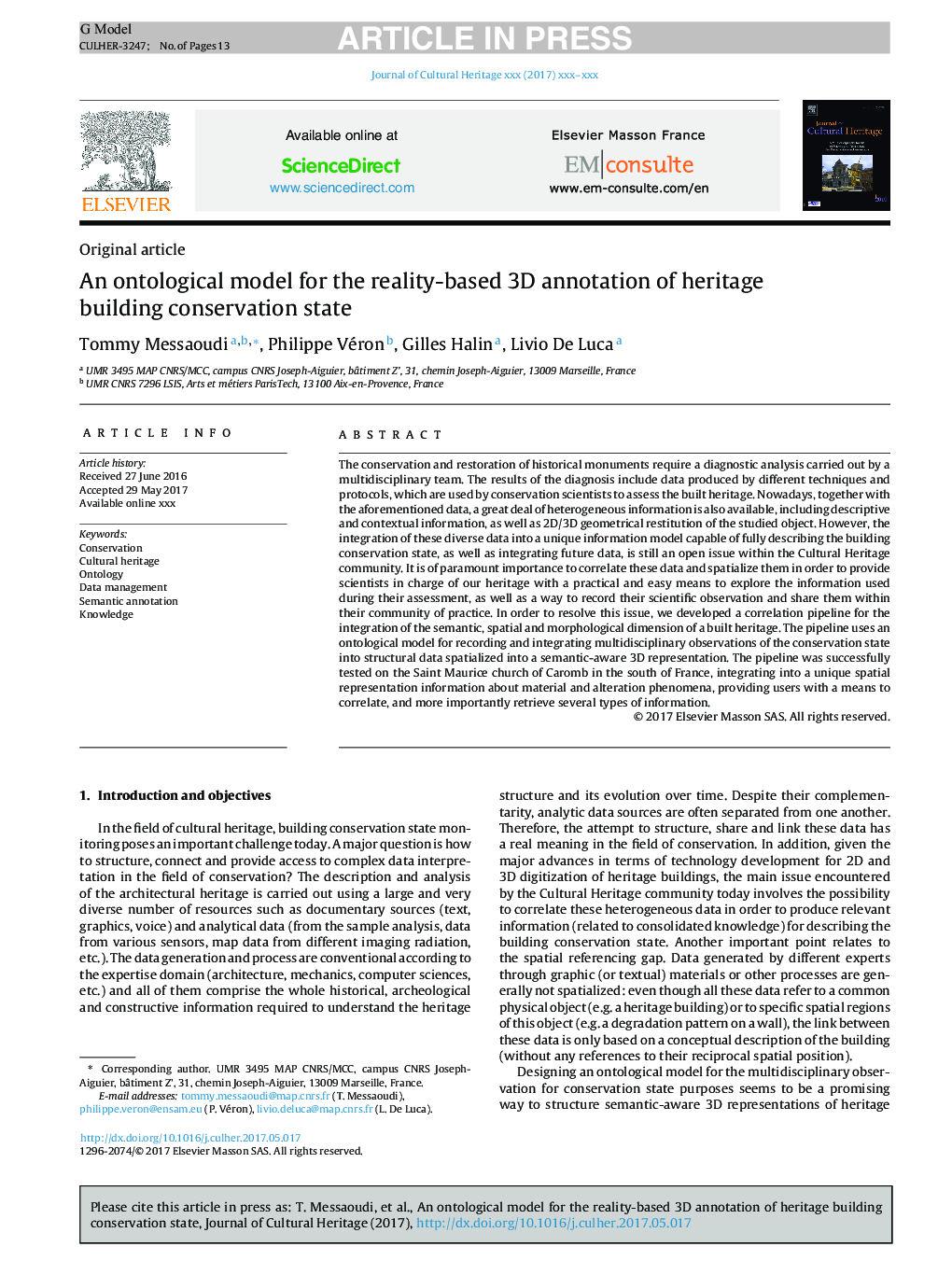| Article ID | Journal | Published Year | Pages | File Type |
|---|---|---|---|---|
| 7446114 | Journal of Cultural Heritage | 2018 | 13 Pages |
Abstract
The conservation and restoration of historical monuments require a diagnostic analysis carried out by a multidisciplinary team. The results of the diagnosis include data produced by different techniques and protocols, which are used by conservation scientists to assess the built heritage. Nowadays, together with the aforementioned data, a great deal of heterogeneous information is also available, including descriptive and contextual information, as well as 2D/3D geometrical restitution of the studied object. However, the integration of these diverse data into a unique information model capable of fully describing the building conservation state, as well as integrating future data, is still an open issue within the Cultural Heritage community. It is of paramount importance to correlate these data and spatialize them in order to provide scientists in charge of our heritage with a practical and easy means to explore the information used during their assessment, as well as a way to record their scientific observation and share them within their community of practice. In order to resolve this issue, we developed a correlation pipeline for the integration of the semantic, spatial and morphological dimension of a built heritage. The pipeline uses an ontological model for recording and integrating multidisciplinary observations of the conservation state into structural data spatialized into a semantic-aware 3D representation. The pipeline was successfully tested on the Saint Maurice church of Caromb in the south of France, integrating into a unique spatial representation information about material and alteration phenomena, providing users with a means to correlate, and more importantly retrieve several types of information.
Related Topics
Physical Sciences and Engineering
Chemistry
Physical and Theoretical Chemistry
Authors
Tommy Messaoudi, Philippe Véron, Gilles Halin, Livio De Luca,
